Article by SOYA Lead Trainer Emma Faulkner, E-RYT500
To move into Ardha Chadrasana or half moon pose, I love to enter this pose via a little flow inspired by Doug Keller.
Start in tadasana, facing the narrow edge of the mat. You may like to place two blocks on their smallest end, shoulder width apart on the floor in front of you. Step the left foot back and externally rotate the left leg, then sweep the arms up to the sky, creating the sensation of opening the front and contracting the back. It is your option to look up to the hands, or forward. Hold the pose for several breaths to allow the body to adjust to its new shape.
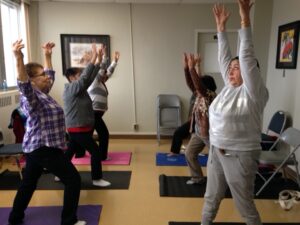
Once you feel stable in Warrior 1 (yes, you are in Warrior 1 – good job!), look down to your blocks, shift your weight into your right foot, and slowly lower your hands to the blocks. Maybe your left foot will stay near the floor, or maybe you will be able to sweep it up, into a hands-on-the-floor variation of Virabhadrasana III, also known as Warrior 3. Hold here for a few breaths, until your body acclimatizes to the effort of lifting the leg.
Then flow between these two poses: step the left foot back into Vira 1, or Warrior 1, arms come up, then hands to floor or blocks, left foot lifting. Inhale each time you come into Vira 1, and exhale each time you come into the variation of Warrior 3.
From this position of Virabhadrasana III, we begin to move into Ardha Chandrasana, the Half Moon Pose:
- Bring the right block forward and to the right slightly, shift your weight into your right hand and right leg.
- Start to rotate and lift your left hip, bring your left hand to your left hip as you do so.
- Reach back through the left foot. A great option is to press the left foot into the wall for support and balance.

- Maybe reach the left hand to the sky, maybe look up. You may also choose to look forward with the neck neutral, or look towards the floor.
- Hold here for several breaths (yes you are doing it – woo hoo!)
- To come out, unwind the hips back to face the floor, both hands to the blocks, shoulders face the floor, lower the left foot beside the right.
- Rest in Uttanasana and maybe find a Malasana as a counter pose.
- Come back to Tadasana and repeat it all on the other side. You rock!
Precautions and Modifications
You can keep the elbows bent and arms lower down in Vira 1 if there is any shoulder limitation. You can stay on the ball of the back foot rather than the whole sole of the foot if there is knee pain in the back leg. You can keep the back leg close to or touching the floor if it is difficult to lift it in AC. You can keep the hand on the hip and look down in AC if that is more comfortable.
Benefits
Balance poses can be exhilarating and can create a sense of satisfaction and progress as your confidence in them shifts over time. They can allow you to see “where you are at” on a given day in terms of mental, emotional and physical balance. Ardha Chandrasana is beneficial for allowing hip supporting muscles to learn new movement pathways, to strengthen and stretch the tissues that support the hip joints.
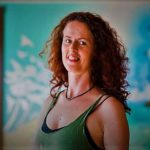
Emma is a Lead Trainer for SOYA’s 200 hour and 300 hour Professional YTT in Prince George, BC, as well as SOYA’s new Online Teacher Training Programs. Her next 200hr Yoga teacher training is a Weekend Program that begins March 5, 2022. Learn more about Emma and her offerings at www.amanitadance.com
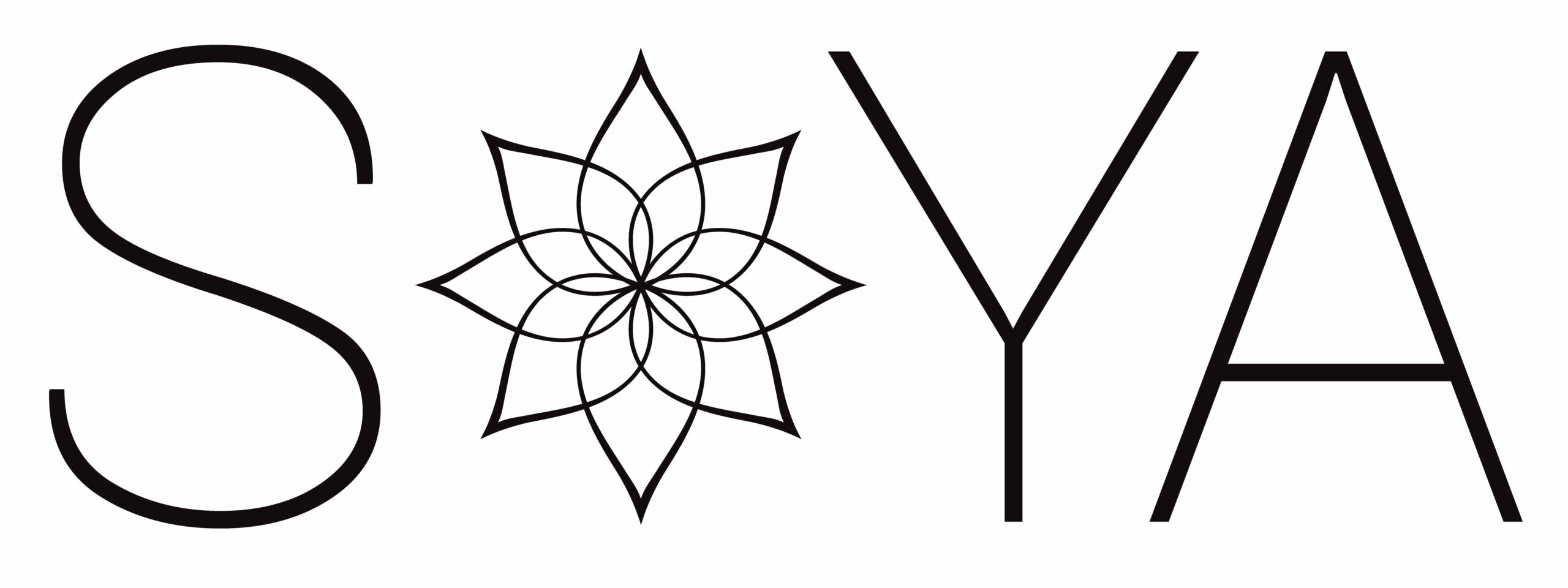
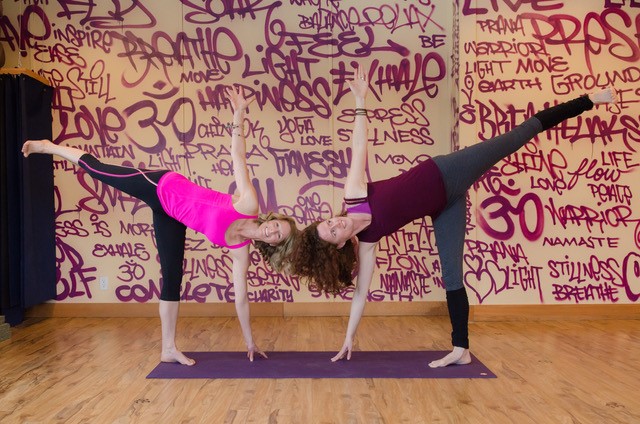
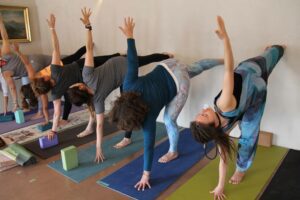
thanks Emma. I was just curious because lately I have read better for your body to come intyo half moon from Triangle pose or warrior 2 . What are your thoughts on this ? Thank-you so much
Hi Daphne. Great question! This version of the pose, and the lead up to it, I would call variations on the theme of the traditional pose. So, the angled hip orientation in Vira 1 and Vira 3 variations lead into an easeful stance in Ardha Chandrasana, as opposed to a big hip “swivel” from the traditional Vira 3 into Ardha Chandrasana. I hear you on the importance of being mindful in transitioning from short edge to long edge of the mat facing poses! 🙂